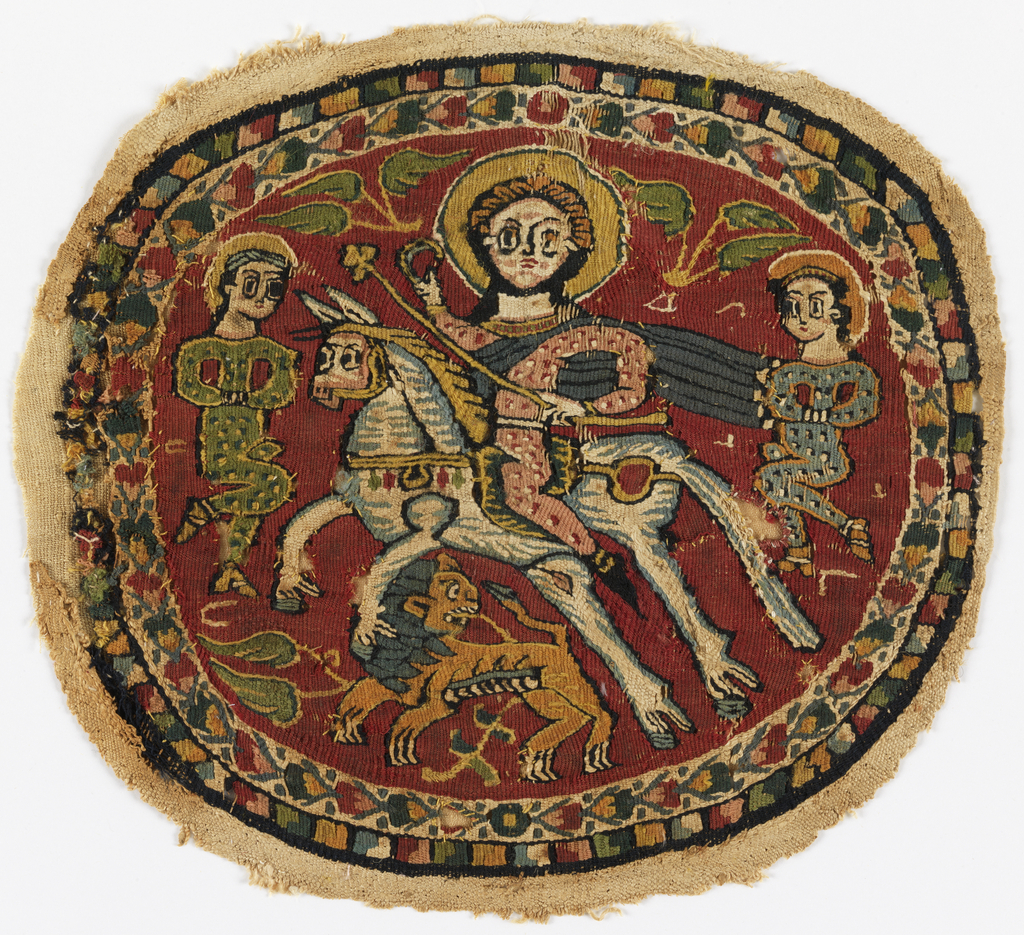Egyptians in the Byzantine (fourth – seventh century C.E.) and early Islamic (seventh – tenth century C.E.) periods often decorated garments with woven designs. Most common among these designs were orbiculi (roundels on the shoulders and abdomen), segmenta (ornamental squares in the same places) and clavi (vertical stripes running from the inner shoulder past the breasts). This example of an orbiculum likely decorated a tunic. Since tunics were mostly plain linen and frequently damaged, it was common for 19th and early 20th century collectors and dealers to cut out decorative elements and sell or display them separately. This seems to have been the case with this example, which is almost identical in material, weave, and style to a clavus in Cooper Hewitt’s collection. Hunter iconography was popular in Byzantine and early Islamic Egypt, particularly for funerary use. The inscription on this orbiculum is illegible, but the inscription on the matching clavus reads, “Long Live,” emphasizing the wearer’s triumph over death.
This textile will be on view in the Hewitt Sisters Collect exhibition beginning December 12, 2014.
